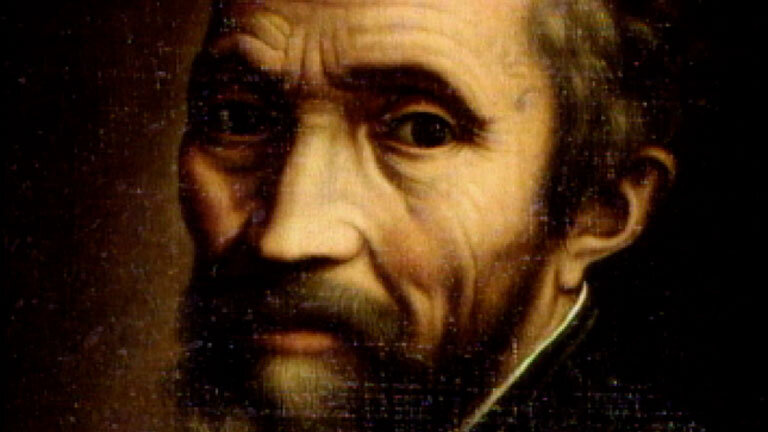I just finished reading William E. Wallace’s new book, Michelangelo, God’s Architect, about Michelangelo’s later years, when he was designing St. Peter’s.
Rarely do I read something that drastically changes the way I see Michelangelo, but this book provided shocking new insights and made me re-envision the artist yet again.
But more than deepening my relationship with Michelangelo, this book deepened my relationship with AGING in general and with the way aging affects creativity and artistic output.
I’m about to turn 45 years old. My brother is on the verge of 50. My husband is on his way to 58. My parents are approaching 75… Every day, I learn something new about these various stages of aging — whether it’s me in a new set of bifocals, my brother and husband embarking on new stages of their careers, or my parents coping with aging bodies… So this book — covering Michelangelo’s life from his 70s until he dies at nearly 89 — was perfect for me at this moment in my own life.
“This study is not much an investigation of ‘late style’ as it is a probing into a late life: how Michelangelo lived and worked in the face of recurring setbacks and personal loss, advancing age, and the constant expectation of his own death.””
Beyond just an exploration of Michelangelo’s art, this narrative explores the strains an aging body puts on the physical process of creation — especially for a marble sculptor, frescoist, architect, all very physical activities.
Michelangelo’s Rondanini Pieta; he was still carving on this the week he died.
In his twenties, Michelangelo carved his Pieta and David — masterpieces of awe-inspiring proportions and talent — but as he aged, even the great marble master had to admit that he would never sculpt such masterpieces ever again… As he aged, he still fitfully carved into marble with aching hands and deteriorating eyesight, but he knew he’d never again achieve what he did in his youth. Like all of us, he had to face the truth: that part of his life was over.
The body begins to fail even when the mind still wants to soar.
I was moved by the losses Michelangelo faced — the deaths of his family, friends, and colleagues piled up around him like stones in a landslide. It reminds me of how many more deaths I see flicking across my social media accounts as my husband and I age… they pile up and pile up until the piling feels sadly normal.
I’ve always been touched by Michelangelo’s faith, but in this story, I was particularly touched by how, as an aging man, his faith seemed to become even stronger as he dedicated his life once again to the church (he was the architect of St. Peter’s late in his life; that’s the crux of this story). He dedicated the remaining days of his life to constructing a church that he had no hope of seeing completed — he was too old; St. Peter’s was too far from finished…
Future generations would have to enjoy it on his his behalf.
I’ve spent my life trying my best to imagine Michelangelo as painfully human (instead of the Divine Master that comes to us from legend), and this book made the artist—in all of his aging grandeur—beautifully human.
So, even though this book is definitely a serious piece of art historical research, it's also a deeply touching book. I can't recommend it highly enough for anyone interested in Michelangelo, the creative process, or aging...
Okay, I must go now and read it again.



